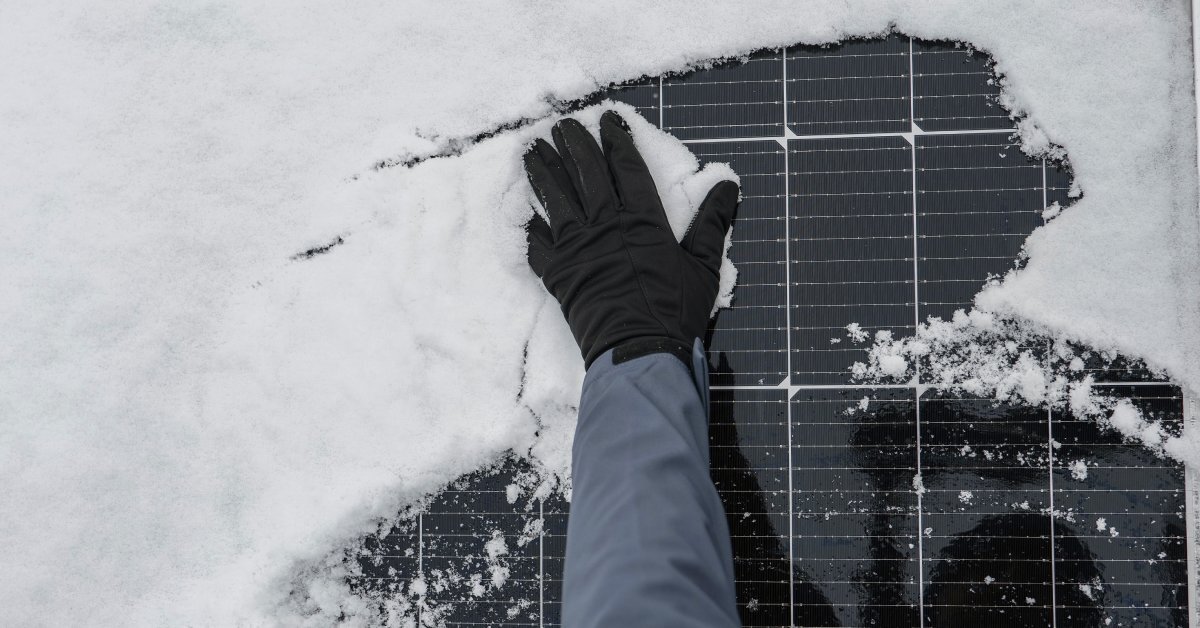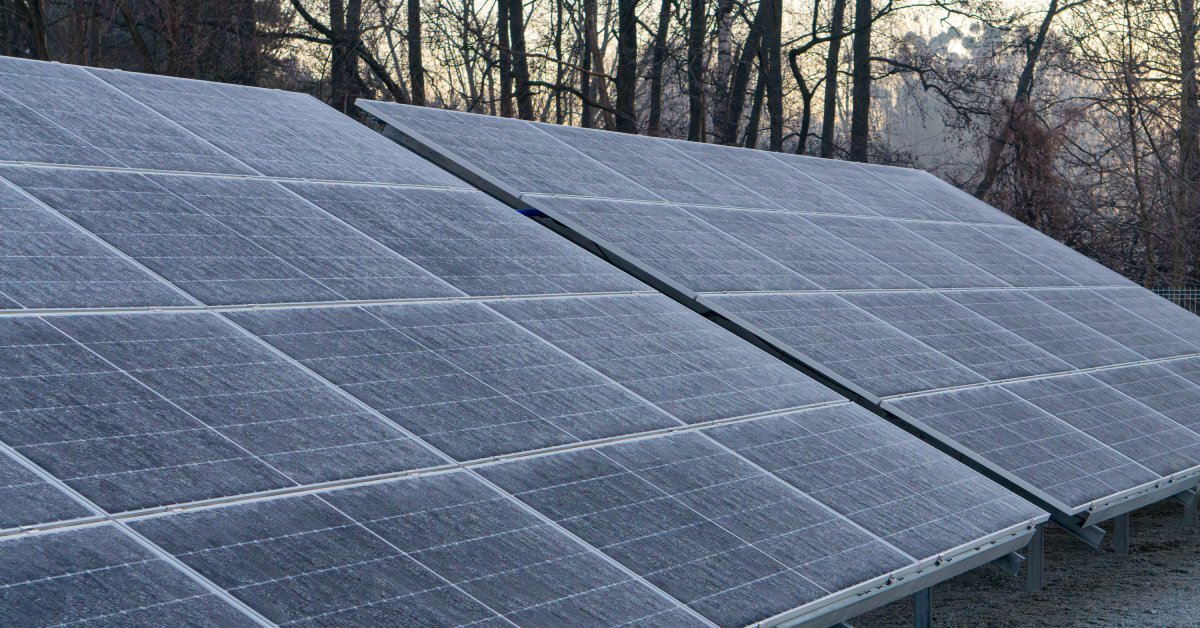Jun 2nd 2025
How Well Do Solar Panels Work in the Northern Winter?
Winter brings unique weather conditions that often limit the capabilities of energy efficiency projects. Using solar energy for your company may seem challenging when you live in a region dominated by freezing temperatures, short sunlight hours, and frequent cloudy skies, but the good news is that solar panels work well in the northern winter. If you manage operations in a cold, snowy climate, you may find that a solar farm investment benefits your company’s energy efficiency and utility costs.
The Impact of Reduced Sunlight
Winter months come with shorter daylight periods, which seem as if they would be an obstacle for most solar farms. Despite these factors, solar grids continue to provide sufficient energy for businesses to operate without trouble.
Do Shorter Days Mean Less Energy?
During winter in northern regions, daylight tends to last only 7–9 hours. Some people worry that fewer sunlight hours will reduce the amount of time solar panels can generate energy. However, modern solar panels are highly efficient in capturing even limited sunlight.
Advances in photovoltaic (PV) technology allow solar panels to generate power during the early morning or overcast afternoons. While production dips compared to summer months, as long as the panels have exposure to light, they’ll continue delivering energy. This is very useful for businesses that operate under harsh weather conditions.
Can Overcast Skies Ruin Energy Production?
Cloud cover may also seem detrimental to solar energy systems, but solar panels are surprisingly resilient. Modern panels can convert indirect sunlight into electricity.
While production may drop by 10–25% on overcast days, panels with a high-efficiency rating can effectively capture diffused sunlight. This makes solar a viable solution for cold, cloudy areas.
How Cold Weather Affects Solar Panels

It’s a common misconception that solar panels rely on heat to function efficiently. Contrary to belief, cold weather actually improves their overall performance. Take advantage of this perk as you install a solar farm in a colder climate.
Why Do Solar Panels Work Better in the Cold?
Solar panels operate through a photovoltaic process that converts light into electricity. Because lower temperatures reduce the resistance of electrical circuits, this allows solar grids to generate power more efficiently. Once sunlight strikes your panels, it’s their energy conversion capabilities that matter, not the external temperature.
For instance, a sunny, 30°F winter day can lead to better energy output than a sweltering 100°F summer afternoon. Cooler climates can often be advantageous for maintaining your solar farm’s productivity.
Is There a Temperature Limit for Solar Panels?
While cold weather is generally beneficial for solar panels, extremely low temperatures create potential problems. Prolonged exposure to subzero climates may impact panel durability over time.
The best way to mitigate repairs is by using solar panels that are built to withstand extreme weather conditions, including icy winters. During the solar installation process, choosing durable panel materials prevents performance issues due to harsh temperatures.
Snow Accumulation and Its Effects
Because of the frequent snowfall in northern states, many business owners believe that cold temperatures will cause more harm than good for their solar energy setup. While the panels may require additional maintenance tasks, understanding how to manage snow can help businesses optimize their energy systems.
Does Snow Block Solar Panels?
When snow accumulates on panels, it can create a temporary physical barrier that blocks light. Fortunately, snow typically clears quickly, especially if you have your panels installed at an angle. Even under heavy snow, partial light may reach any uncovered areas, and energy production typically resumes as soon as the snow begins to shed.
How Can Panels Handle Heavy Snowfall?
Modern energy systems can generally withstand heavy snow loads without immediate damage. Features such as reinforced frames and angled mounting allow snow to slide off panels when sunlight or warmer temperatures return. Additionally, owners can prepare their solar equipment for winter by using preinstalled heating devices or applying hydrophobic surface coatings.
ROI in Northern Climates
Despite the seasonal hurdles of winter, solar energy remains a financially sound investment for businesses in northern climates. To gain additional long-term benefits for your business, combine your installation with proactive measures to increase the potential for ROI (return on investment).
How Can Reduced Winter Output Affect ROI?
The winter season may create a decrease in energy production, but it’s typically offset by higher yields during the rest of the year. Over twelve months, northern solar farms generally recoup costs as they average out stable energy generation.
Regional incentives, such as tax credits and rebates for renewable energy installations, can further improve financial feasibility. For a faster return on your solar investment, focus on state programs designed for northern climates.
Are Solar Panels a Good Idea?
Ultimately, the long-term cost savings and sustainability of solar energy outweigh seasonal limitations. With advancements in technology and continuous reductions in panel costs, solar panels work well in the northern winter. Northern business owners can confidently explore solar as a practical, eco-friendly initiative.
Maximizing Solar Panel Performance in Winter

After considering the advantages and potential challenges of solar grids in cold climates, implementing solutions to drive winter performance will further improve energy efficiency. Business owners can use a range of innovations and technologies to optimize their solar projects.
The best way to reap the benefits of solar is by first placing the panels in the most optimal spots around your business. Orienting panels at the best angle allows for better snow runoff and positions them to capture the most available daylight. Seasonally shifting angles can further improve outcomes.
Additionally, equip your panels with solar tags to track real-time energy output. This technology allows operators to pinpoint and respond instantly to dips in efficiency and generate the maximum energy output even when conditions are less than ideal.
Relying on Battery Storage Solutions
By collecting excess energy during sunny periods, batteries provide an on-demand power source for darker, low-light days. Pairing a battery system with your solar farm gives your company uninterrupted access to renewable energy regardless of seasonal fluctuations.
By understanding how solar panels operate in snow, cold temperatures, and reduced light conditions, you can take steps to produce efficient energy year-round. For personalized guidance, consult with solar installation experts to determine the best system setup for your location.

